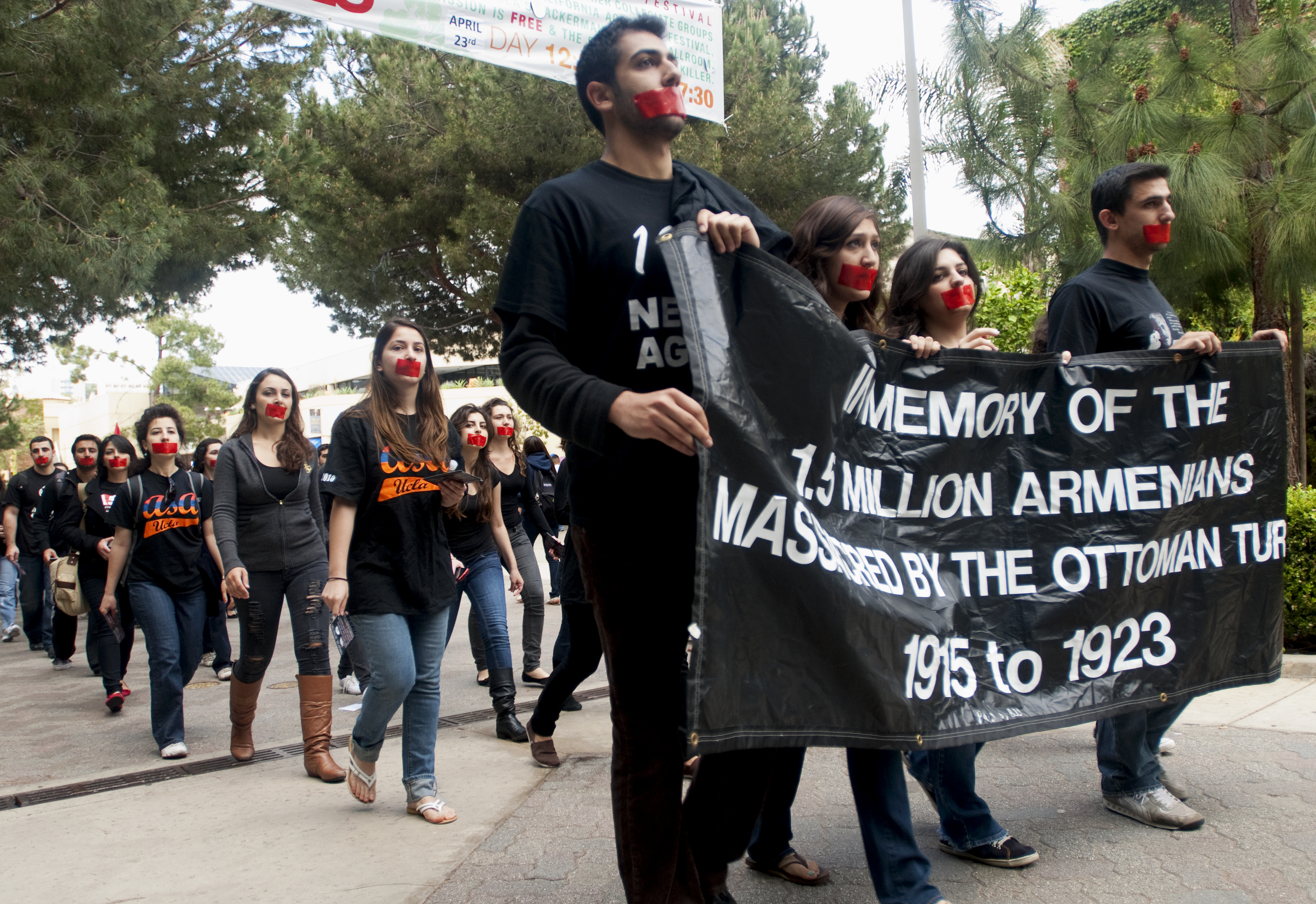Hundreds of cross-shaped papers lay on the lawn of Wilson Plaza on Wednesday.
Students taped signs to the floor and placed stones on the crosses to keep them from blowing away in the wind.
It was the third day of a week-long effort to bring attention to the Armenian genocide, which began 96 years ago in 1915 and ended in 1923.
A silent march, hosted by the Armenian Students’ Association at UCLA, began at 12:30 p.m. as a stream of students in black shirts gathered to march around campus.
They put aside the duct tape used to keep the signs from falling and picked up red tape to cover their mouths as they prepared to move. The tape is a symbol of censorship by the Turkish government, said Jano Boghossian, a third-year physiological sciences student.
Armenians this week are commemorating what they call the systematic decimation of their people by the Ottoman Empire, now the Republic of Turkey.
The Armenian population in the Ottoman Empire was reported to be two million in 1915, according to the Armenian National Institute.
An estimated 1.5 million were murdered in the next eight years, along with the masses that were forced out of the country.
The Turkish government refuses to classify the deaths as genocide, labeling them as a byproduct of World War I, said Razmig Sarkissian, a second-year English student.
Though most students understand the organization’s views, many do not know about the genocide, said Nina Babaian, a third-year art history student and the president of the Armenian Students’ Association.
Many Armenian students at UCLA are the grandchildren of those who escaped.
Third-year psychology student Christina Soibatian’s grandfather was saved as a child by being dressed up as a girl and taking refuge with a Turkish family. The rest of his family did not survive, Soibatian said.
Although the genocide happened nearly a century ago, Armenians still feel an obligation to remember what happened.
“I owe it to my ancestors, I owe it to the memory of my people, I owe to all people who are suffering from genocide today,” Sarkissian said.
After 96 years of vigils, protests and marches, Armenians choose to keep going.
“Giving up would almost be like we aren’t recognizing it ourselves,” Soibatian said. “It’s such a prominent part of our history that it’s not something we can erase.”
The Armenian people are not simply waiting for an apology, Sarkissian said, adding that if they get one, they will not stop remembering past injustice.
Sarkissian also said the message of the commemoration carries into the present. He pointed to discrimination in Turkey and genocide in places like Darfur.
“It should be on the tip of everyone’s tongue. The horrors of genocide and the violation of human rights needs to be something everyone knows about,” Sarkissian said.
As the crowd marched up Bruin Walk, a woman in heels fell behind as she struggled to keep up. Tmara Morsessia, a mother of one of the students in the march, drove in traffic from Glendale without knowing where to park.
“I just had to be here,” Morsessia said.
Her other daughter is organizing an event at the University of San Diego ““ Morsessia was going there immediately after.
She was there to respect and honor her ancestors, she said.
